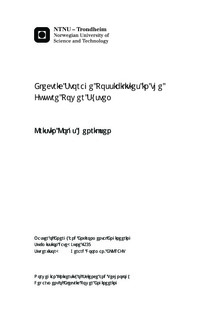| dc.description.abstract | In recent years, the amount of renewable energy sources in Europe has increased substantially. During the work on this thesis, wind and solar energy is added to the simulating tool, PSST. Where wind and solar energy are added the generation mix and the electricity prices are influenced. This is especially seen in Germany which has a lot of wind and solar energy at the present time, and are planning to increase an expansion in the future. In Germany this leads to a decrease in the use of lignite and hard coal, which then reduces the $CO_2$ emissions. As result of the increased amount of renewable energy sources that can not be controlled to a great extent, there will be more unstable electricity production in the power system. An electric storage can be used as a buffer and create more stability. The storage possibilities PHS and CAES were modeled in PSST as well. However, the results from modeling these storages proved them to be unprofitable, which does not corresponds to reality. The main reason is for this flaw is the modeling of the marginal costs, which needs to be done differently. The marginal cost needs to be base on an yearly or weekly optimization in the use of respectively PHS and CAES. Even though this was done, CAES seldom proved to be beneficial, due to low efficiency and the fact that CAES uses gas as a fuel. However, if the modeling where done with a newer CAES in mind, with higher efficiency and compressor capacities CAES might be profitable, especially if in addition the gas prices can be lowered as well. | nb_NO |

